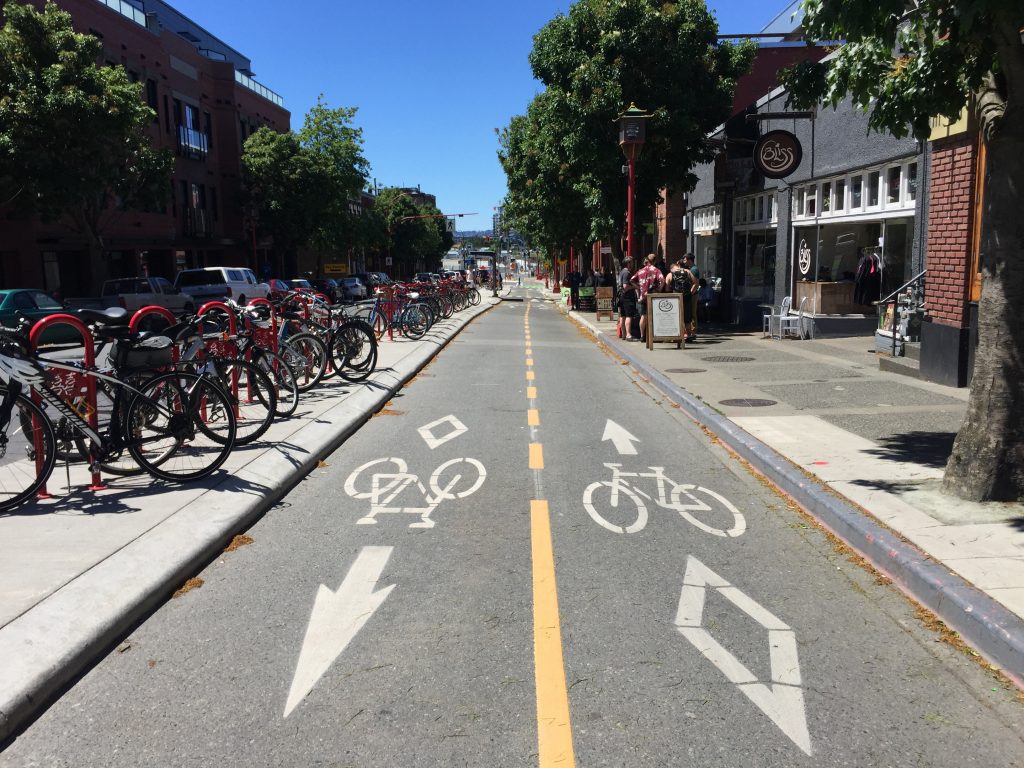Champions of active transportation across the country have issued a fresh call for federal leadership in making Canada a great place for everyday walking, cycling, and other forms of active transportation. (See the letter, signed by 23 prominent organizations.)
The call for federal action is prompted by two exciting developments:
- publication of an October 2018 report by a committee of the Council of Ministers Responsible for Transportation and Highway Safety. (See COMT report.)
- a call for federal leadership on active transportation in a near-unanimous resolution by the Federation of Canadian Municipalities, June 2018. (See FCM resolution.)
Act now
Supporters are asked to join our call by taking a moment to write to the federal transport minister Hon. Marc Garneau asking for action. Tell him why it is important to you. We encourage you to cc your provincial transport minister, your MP, your MLA and your local municipal/band council member. To keep us in the loop, cc Clifford Maynes [email protected] and Anders Swanson [email protected].
Background
In 2018, the Council of Ministers Responsible for Transportation and Highway Safety (COMT) released a report titled Active Transportation: A Survey of Policies, Programs and Experience.
COMT is a national level body that coordinates research and policy development among federal and provincial transportation authorities. The council includes every provincial minister, deputy minister and their colleagues at Transport Canada.
The October report was informed by a questionnaire answered by “44 respondents, representing one federal government department, 14 municipalities, 6 non-government organizations (NGO), 20 provincial and territorial government departments, and three transit service providers.”
You can read the full report here.
It identifies common barriers to active transportation and describes the patchwork of programs and policies enacted across the country. In its “Observations and Conclusions”, the report looks at each government level and notes that “consideration could be given to whether there is a role for the federal government to provide additional leadership, policy, programming and/or financial support to provincial and territorial jurisdictions in support of active transportation initiatives.”
We certainly think so.
Knowing what a coordinated approach to active transportation will do for Canada, we know there is an important role.
What is and what could be the federal role in active transportation?
The extent of the federal government’s involvement in active transportation is something it is free to define. For example, local governments implement local infrastructure but often with funding support from other levels, with provincial and federal agencies involved in projects and areas that fall within their mandate and interest. Examples of federal government involvement in active transportation over the last few decades can be found across Canada in everything from services and programs to bridges with bike lanes.
However, while the federal role in motor vehicle is quite clearly understood by most people, the lack of coordinated effort and oversight of active transportation is clear.
The stakes are high.
Currently, the Government of Canada sets major infrastructure funding priorities (see P.T.I.F. for example) and signs international agreements (see the Paris Agreement) whose outcomes and effectiveness are directly affected by how well we manage active transportation.
The mandates of numerous departments and agencies within the federal government clearly show that we could/would benefit immensely from increased active transportation focus.
We know much more about what we should be doing than we actually do, however. This 2017 report by our Chief Public Health Officer, entitled “Designing Healthy Living” is just one obvious example of the potential payoff and importance. Transport Canada, through the first ever Vulnerable Road Users Task Force, recently studied road safety for cycling and walking and identified a long list of countermeasures that need to be acted on in its summary report.
We are just getting started. Consider this: as the largest single employer in Canada, the federal government itself would greatly benefit from a strategy intended to get its own employees safely to work using bicycles or other modes of sustainable transportation. Making it happen requires a multi-billion dollar investment in safe infrastructure and collaboration with all levels of government. But it would be worth it. That investment has a return. he productivity benefits – based on abundant research about the impact on sick days, mental health and personal finances – mean that an internal active transportation strategy alone would have an impact on every thing the federal government does.
That’s why large, national-level research and policy development organizations whose work includes the struggle to contain chronic disease or advocating for reduced trauma and road violence believe a large, dedicate fund just for active transportation projects is in the national interest and that it is something we can easily afford.
And yet we lack clear direction at the federal level. Canada does not have a ministerial mandate letters that clearly state who is responsible for active transportation. Canada does not have a coordinated national effort to advance active transportation or national targets for biking or walking mode share. We do not even clearly know how many children bike to school – nor are we capable of coordinated policies and programs to do something about it. As a result, we lag far behind peer countries in the number of people who walk to school, ride bicycles for transportation and the level of death and injury they face per km of travel.
To see what municipalities across Canada are asking for, see this important motion passed by FCM Council in June 2018 calling for federal leadership describes a specific set of actions to take.
Have a look at the Vélo Canada Bikes position paper on the federal role in cycling .
Finally, to see what is happening around the world, have a look at this listing of countries with a national cycling strategies.


